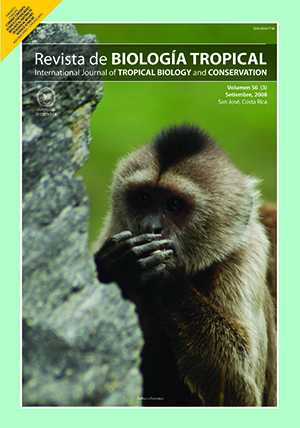Resumen
Hunting may have drastic effects on some populations of frugivores and seed dispersal agents, which in turn may affect patterns of forest regeneration and plant diversity. However, when a species disappears, it is possible that the population of other species increases due to competition release, compensating or not, their ecological roles. The main aim of this study was to measure density compensation in primate communities, their possible effects on seedling and sapling diversity, and compensation of seed removal rates in two canopy trees (Apeiba aspera and Hymenaea oblongifolia). The study site was Amacayacu National Park (Colombian Amazon), where we carried out a census of mammal species using line transect methods in two forests with different levels of hunting pressure. Vegetation plots were used to quantify plant diversity for seedlings and saplings (4 m2 and 25 m2 respectively), and fruit traps were set up to estimate seed removal of A. aspera and H. oblongifolia. Large primates were less frequently encountered near human settlements, while small primates exhibited the opposite pattern, suggesting a density compensation effect. The diversity of regenerating plants was higher in the forest where large primates occur. Seed removal was higher in forests with large primates for A. aspera, but not for H. oblongifolia. Overall, the results support the hypothesis of density compensation on the primate community; however, there is no strong evidence of ecological compensation in terms of seed dispersal and regeneration in the species studied. Finally, the presence of large seed dispersers (e.g. Lagothrix lagothricha) was associated with higher plant diversity.##plugins.facebook.comentarios##

Esta obra está bajo una licencia internacional Creative Commons Atribución 4.0.
Derechos de autor 2008 Revista de Biología Tropical
Descargas
Los datos de descargas todavía no están disponibles.






